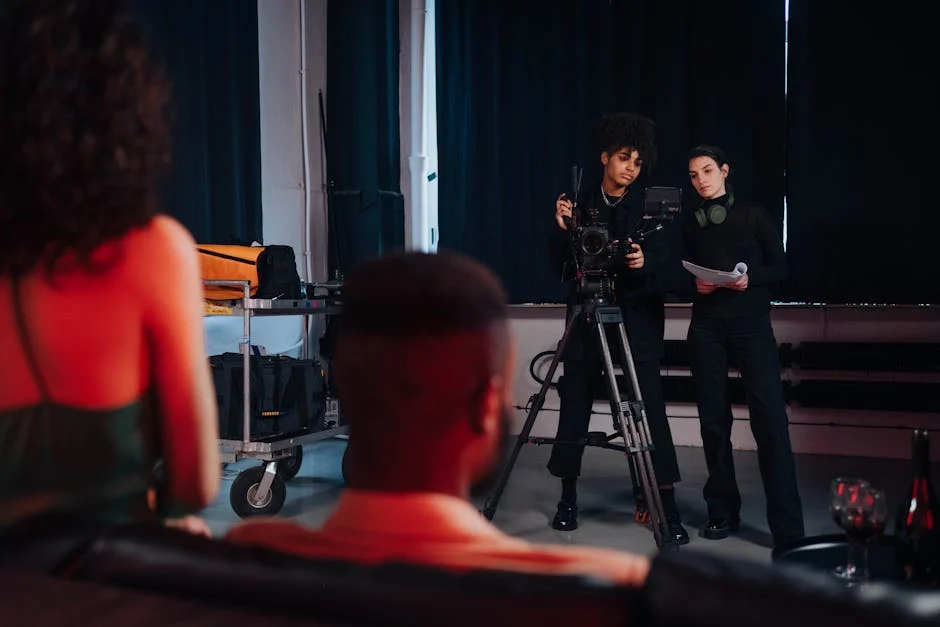Understanding commercial videography
Commercial videography involves creating video content for businesses to promote their products or services. It's a powerful tool for companies to showcase their brand and reach a wider audience. Through engaging videos, businesses can communicate their message effectively and connect with potential customers on a larger scale. Commercial videography allows businesses to tell their story visually, capture the attention of viewers, and convey their unique selling points in a dynamic way. It plays a crucial role in establishing a strong online presence and expanding business reach in today's digital age.
Local impact of commercial videography
Commercial videography can significantly boost local businesses. By showcasing products or services in engaging videos, businesses can attract more customers locally. According to a study by Forbes, 64% of consumers are more likely to buy a product after watching a video about it. This means that investing in commercial videography can help your business stand out in the local market and increase your customer base. Videos allow you to connect with your community on a personal level and create a lasting impression, ultimately leading to more sales and brand recognition.
Reaching a wider audience through video
Creating videos can help you reach more people than traditional methods. By using high-quality videos, you can connect with a larger audience, increase engagement, and attract potential customers. Videos are easily shareable across various platforms, allowing your message to reach a wider audience. Visual content is more likely to be remembered than text, making it a powerful tool for expanding your reach. Additionally, videos can help you convey emotions and tell stories effectively, making your message more compelling and relatable to a global audience.
Benefits of expanding globally with videography
One big advantage of using videography to reach a wider audience worldwide is how it can showcase your products or services in action, making it easier for potential customers to understand and connect with what you offer. Additionally, video content grabs attention quickly, helps build credibility for your brand, and can be easily shared and viewed across various online platforms. This can lead to increased brand recognition, improved engagement with your target audience, and ultimately, higher chances of converting viewers into customers.
Creating impactful video content
To create impactful video content, focus on telling a compelling story that resonates with your audience. Keep your message clear and concise, and make sure to evoke emotion or provoke thought. Use high-quality visuals and audio to grab viewers' attention and keep them engaged throughout the video. Incorporate your brand identity and values into the content to make it memorable and help with brand recognition. Additionally, consider the platforms where you will share your videos to reach a wider audience and maximize your impact.
Leveraging social media for reach
To reach a wider audience through your commercial videos, utilizing social media is key. By sharing your videos on platforms like Instagram, Facebook, and YouTube, you can attract more viewers and potential customers. Social media offers a vast audience that you can tap into to expand your reach beyond your local area. Make sure to use relevant hashtags, engage with your audience, and leverage the sharing capabilities of these platforms to increase visibility. Consistent activity on social media can help you build a dedicated following and increase the exposure of your commercial videography business.
The power of storytelling in commercial videography
Storytelling is a powerful tool in commercial videography. It helps in creating a connection with your audience by conveying your message in a compelling and engaging manner. Through storytelling, you can evoke emotions, capture attention, and leave a lasting impact on viewers. By weaving a narrative into your commercial videos, you can effectively communicate your brand's message and values, making it more relatable and memorable to your target audience.
Collaborating with influencers for brand exposure
When you collaborate with influencers for brand exposure, you can tap into their large following to showcase your products or services. Influencers have a loyal audience that trusts their recommendations, which can help elevate your brand awareness. By partnering with influencers, you can reach a wider and more diverse audience that you may not have been able to reach on your own. This can lead to increased engagement, brand visibility, and potential new customers for your business.
Strategies for successful global expansion
To expand globally, enhancing your website with multilingual options is essential. Utilize social media platforms like Facebook, Instagram, and LinkedIn to reach a wider audience. Collaborate with international influencers to promote your brand. Attend trade shows and industry events to establish global connections. Research your target markets thoroughly to understand cultural differences and tailor your content accordingly.
Conclusion: Growing your business through commercial videography
To conclude, utilizing commercial videography can significantly expand your business reach. By showcasing your products and services through engaging videos, you can attract a larger audience and establish a strong online presence. Video content has the potential to reach a global audience, increase brand recognition, and drive more traffic to your business. Incorporating commercial videography into your marketing strategy can help you stand out in a competitive market and connect with customers on a more personal level. So, consider investing in high-quality video production to elevate your business to new heights.


